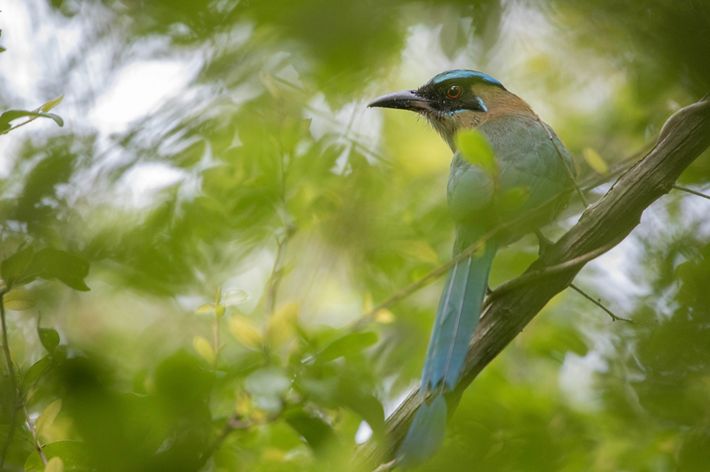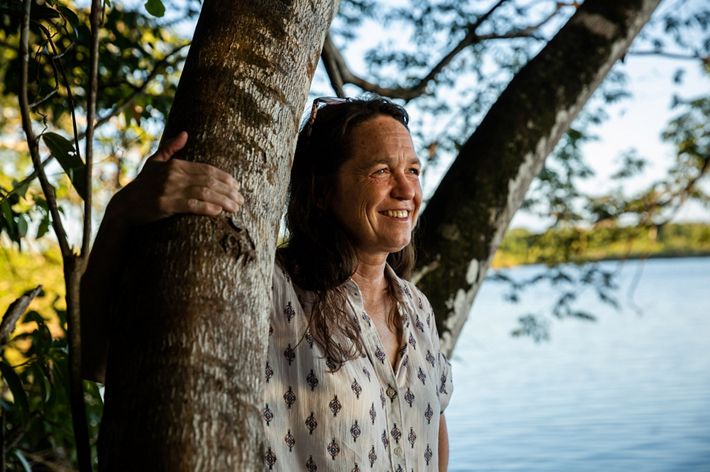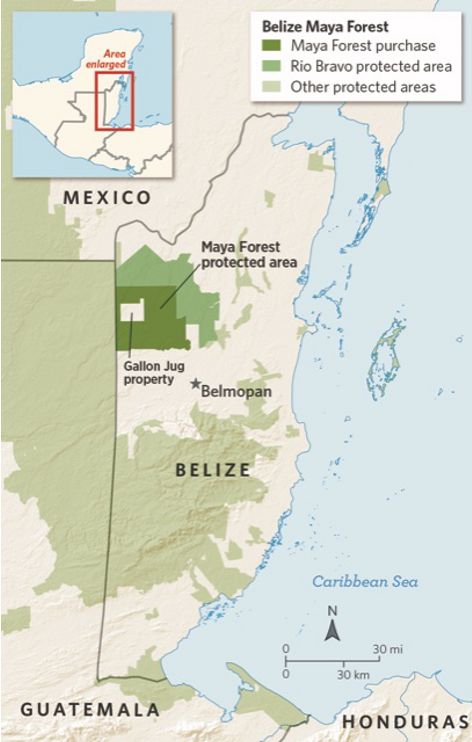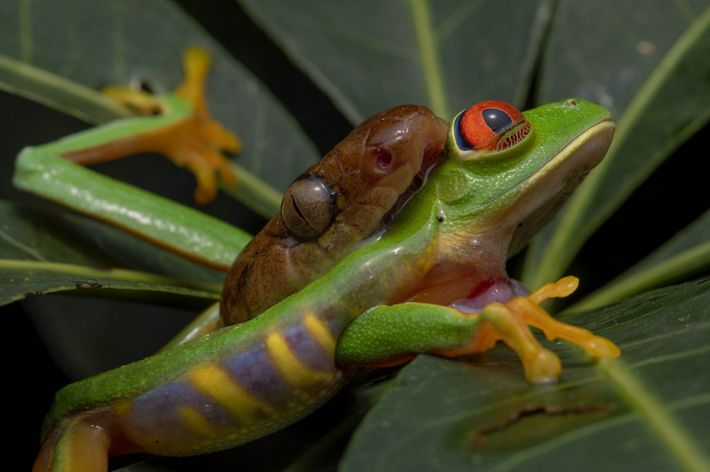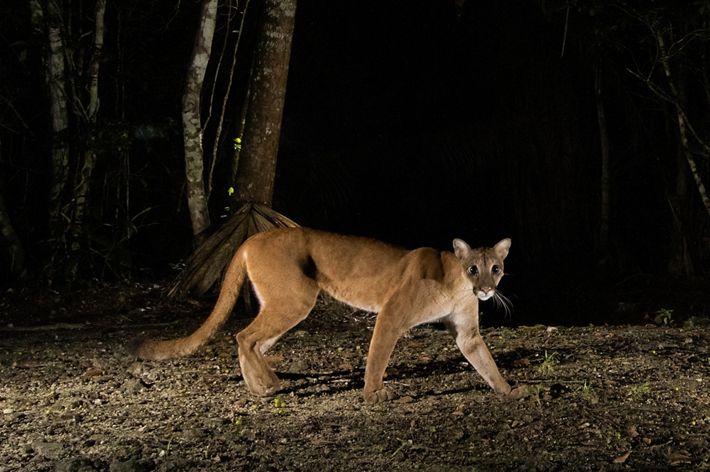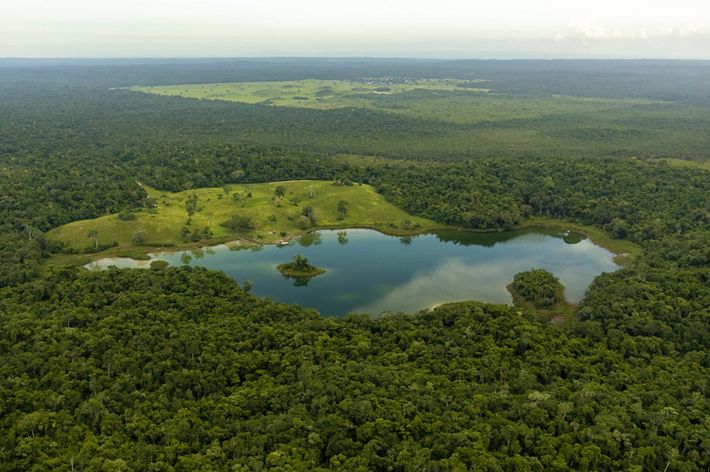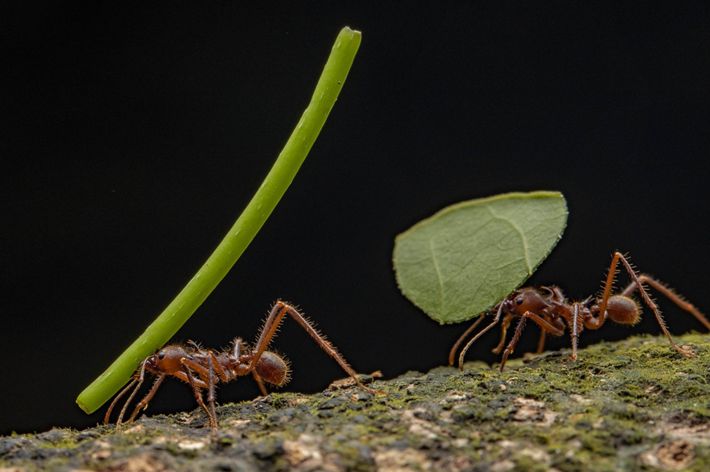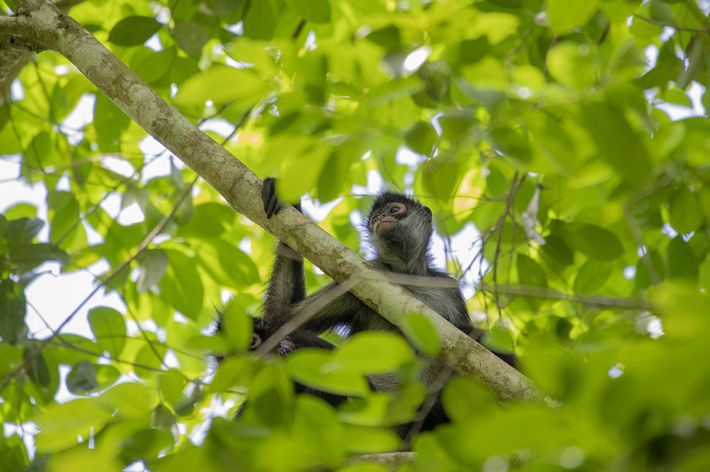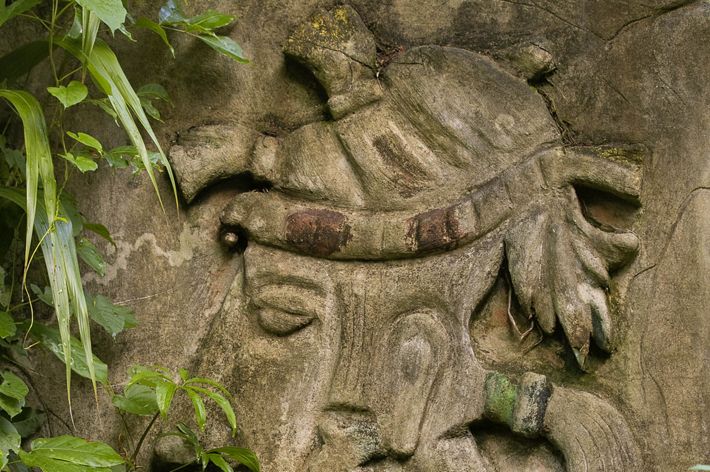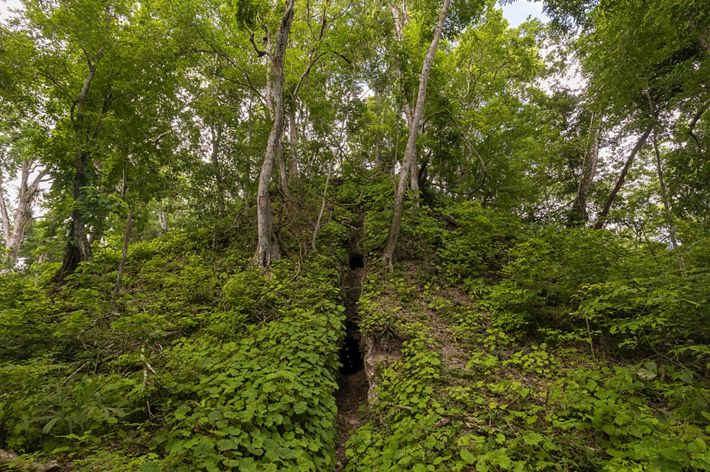
Saving the Maya Rainforest
An innovative deal helps Belize bring its total protected lands to nearly 40%.
Winter 2021
Deep in the forest, biologist Elma Kay and I are bouncing a truck along a recently abandoned logging road, our eyes scanning the brush. This morning, we’ve already seen a fox lolling in the sun and been chased by an ocellated turkey, but what we are both longing for is a jaguar.
We’re on the eastern edge of the 37-million-acre Selva Maya, the largest swath of tropical rainforest in the Americas north of the Amazon, which stretches across Belize, Guatemala and Mexico. The Selva Maya boasts more than 400 species of birds and 200 species of trees, as well as the largest population of jaguars in Central America. Still, in the 20-plus years that Kay, a stalwart of the Belize conservation scene, has been visiting this mecca of biodiversity, she has encountered the elusive cat just four times. But we’ve been hearing reports of sightings in the local area.
“You can’t guarantee jaguars,” Kay says in her lyrical accent as we set off earlier this morning. “But if you spent a week here, your chances are very high.”
It is July and The Nature Conservancy and its partners recently closed a $76.5 million deal to protect 236,000 acres of rainforest here known as the Belize Maya Forest. Together with the neighboring Rio Bravo Conservation and Management Area, which TNC helped establish in 1989, the forest will anchor an 11-million-acre network of protected land that spans an area roughly the size of Vermont and New Hampshire combined—amounting to almost a third of the entire Selva Maya.
With the most recent deal, Belizeans have boosted their total protected land area to nearly 40%. Tropical forests serve as valuable carbon reserves, potentially representing up to a quarter of the climate mitigation needed globally by 2030 under the Paris Agreement. At a local level, this forest contains three major watersheds supplying the country with about a third of its drinking water and a quarter of its water for irrigation.
Kay has long had a hand in environmental protection in Belize. In 2010, she co-founded the University of Belize Environmental Research Institute to train the next generation of natural resource managers. Now, she will lead the newly created Belize Maya Forest Trust, which will manage this massive new protected area.
“TNC has a 30-year history of working in Belize to make sure there’s a balance between people and the environment,” says Julie Robinson, director of TNC’s Belize Program. Efforts have focused on building the capacity of local groups to sustainably manage their resources.
Suddenly, it happens. Watching the road ahead of us, I’m the first one to see it: the neck. Even in broad daylight, the spots are not the first thing you notice on a jaguar. It’s that neck, thick as a wrestler’s. I stop the truck. The stout predator stands there, broadside to us, glaring. The creature then turns and saunters down the road. I ease off the brakes and let the truck roll forward, hoping for a closer look. The jaguar cranes its head around for one last stare-down before vanishing into the trees.
Even as we lose sight of the big cat, we know something important is happening in the forests here.
Only a few years ago, it seemed likely that this remarkable place would be destroyed. Unlike the Maya Mountain Massif in the southern part of the country, which is safeguarded by a network of national parks and reserves, forests elsewhere largely remained in private hands. Some forests neighboring the Maya Forest were disappearing at an alarming rate.
But one landholder here proved to be a surprising ally. Michael Bowen runs the business holdings of the Bowen family, which ranks among the largest landowners in the country. The family immigrated from England eight generations ago and gradually acquired a sweeping portfolio of enterprises ranging from Belize’s largest brewery and a Coca-Cola bottling franchise to cattle and timber holdings. When the family’s latter-day patriarch, Barry Bowen, died in a plane crash in 2010, Michael inherited control of the sprawling business, including the Chan Chich Lodge and neighboring ranch.
“It was a hobby farm for my dad,” Bowen says one morning in the Belize City headquarters of Bowen & Bowen Ltd. Clad in skinny jeans and bright yellow sneakers, Michael says he grew up in Miami and, while he had fond memories of spending time with his father out in the rainforest, he was a city kid through and through. Sustainability mattered to him in theory, but a nature lover, he was not. At least not yet.
After taking the helm as CEO, the business-minded son was forced to make some hard decisions to streamline the company and keep all its pieces together. Reluctantly, he decided to sell off most of its landholdings, but he kept the plot called Gallon Jug, on which the Chan Chich Lodge sits, in the heart of the Belize Maya Forest. Within the family, the decision was an emotional one, but Bowen felt the timberland would be in good hands with the new owner—a U.S.-based sustainable logging company called The Forestland Group.
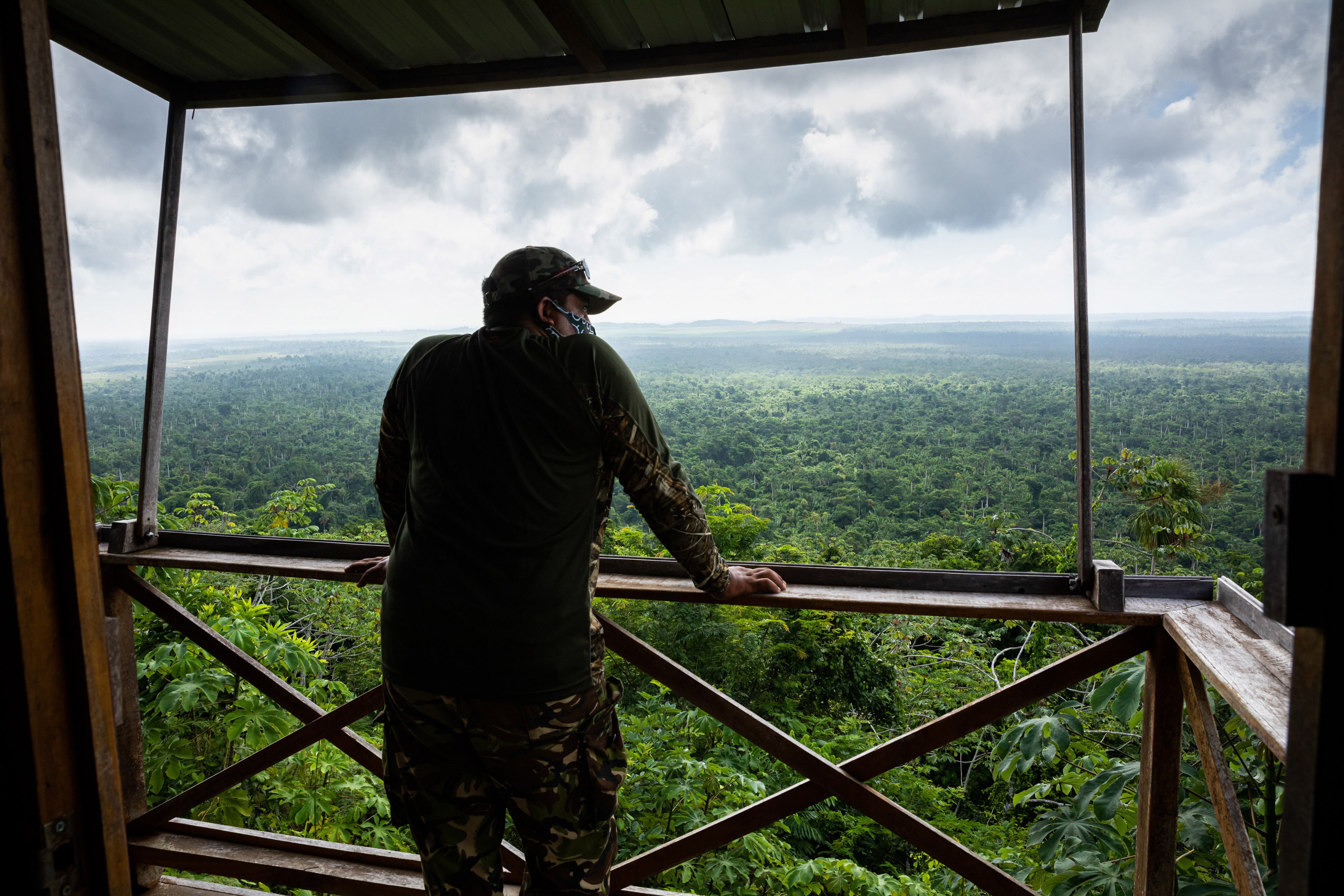
Carbon Funds a Forest’s Future
The largest trees in the Belize Maya Forest rise some 80 feet or more into the air. As their verdant canopy absorbs carbon dioxide from the atmosphere, their trunks swell, sequestering it in their hardwood. The average tropical tree can soak up approximately 50 pounds of carbon per year. Once mature, the Belize Maya Forest will sequester more than 10 million tons of carbon. If this land were cleared for farms or ranches, much of that carbon would be released again. But thanks to the landmark deal secured between The Nature Conservancy and the Belize government, this forest will be preserved in perpetuity. Once the carbon stocks in the forest are fully assessed and validated by a third party, they can be sold as credits on the international carbon market to businesses and other organizations to offset their emissions.
On just a small portion of the neighboring Rio Bravo Conservation and Management Area, a carbon-finance project funded a $2.5 million conservation endowment and kept more than 1.9 million tons of carbon dioxide from entering the atmosphere over eight years.
Under TNC’s agreement with the government, the sale of carbon credits at this new preserve will cover half the purchase of the land and fund a $15 million endowment to manage the forest into the future.
“Those credits are our ticket to long-lasting conservation,” says Elma Kay, the head of the Belize Maya Forest Trust. “You cannot have long-lasting conservation without sustainable finance.”
Bowen, however, didn’t anticipate the level of threat that the land now faced. Forests in Belize were being lost at a rate of nearly 1% per year, and illegal logging, ranching and farming was occurring even inside the country’s network of protected areas. And while The Forestland Group had been a responsible steward of the forests on its land, it put the property up for sale again eight years after purchasing it. The likely buyers, Bowen knew, would be the neighboring Mennonite community.
There are approximately 12,000 Mennonites living in Belize, and they are among the most prosperous farmers in the region, using modern equipment and engaging in large-scale, industrial agriculture. Bowen had already seen tens of thousands of acres of forest in Belize cleared to make way for rows of corn and soybeans, and he feared that Chan Chich might become just an “island of forest” in a sea of farmland. And while Belize’s agriculture sector has provided critical food security and economic benefits during the pandemic, those benefits have come at a cost.
In 2014, Bowen began talking with former U.S. Treasury Secretary Hank Paulson and his wife, Wendy, who were longtime visitors to Chan Chich. Both were committed conservationists and former members of TNC’s global board of directors. Over the next five years, a coalition of more than a dozen conservation groups and foundations banded together, including TNC, the Paulsons’ Bobolink Foundation, The Rainforest Trust and The Wyss Foundation. They needed to come up with a strategy not only to purchase the property but also to ensure that it could be properly managed long into the future by working with local partners like Bowen and the University of Belize Environmental Research Institute.
Over the course of 2020, the pandemic and resulting travel restrictions stifled the tourism-focused Belizean economy. By that December, however, the conservation groups had secured the funds to buy the land. Then came a deal with the Belizean government that would allow the Belize Maya Forest Trust to sell carbon credits to cover half of the property’s purchase cost and, more important, establish an endowment to support sustainable management of the forest. The government’s support for the deal, at a time when the country’s economy has been hit hard, signals a recognition that nature must be a part of the country’s sustainable development.
“It was a really difficult year for the world,” says TNC’s Julie Robinson. “Then we just had this huge win.”
A couple days after my jaguar sighting with Kay, I meet up with Jeff Parrish, TNC’s global managing director for nature protection, who came from the United States to see the Belize Maya Forest. We hike up the entry steps to La Milpa, a Mayan archaeological site in the Rio Bravo Conservation and Management Area. We stand in the center of the ruined city, buried pyramids rising up to the tree canopy. Parrish seems thrilled that not just Rio Bravo but also the Belize Maya Forest are now protected. “At TNC, we talk a lot about acres and hectares, but behind every hectare is something with two eyes, two ears, a nose and a mouth,” he says. “It’s fulfilling to be out here and have it feel real, to see what’s behind all those numbers.” As if on cue, a family of pointy-nosed coatimundis scampers past.
Still, Parrish knows that the work here is far from done. Earlier, Robinson had taken us out to an escarpment on the edge of the property to get a clearer view of the threats that the protected area still faced. It was a hot, clear day. A king vulture soared overhead. We gazed out across the recently planted farmland, which looked, improbably, just like central Iowa. Below us, at the base of the escarpment, we could see a chain of sinkholes brimming with freshwater: the sacred pools of Cara Blanca, a pilgrimage site for Maya people. Just a thin band of forest separated them from the farm fields.
Robinson pointed at two pools the color of café con leche. Before the forests had been cut and the land torn up, they had been crystal clear, she said. Such pools feed into river systems where the Central American river turtle, known as the hickatee, has already grown critically endangered from overharvesting for their meat. Surveying the damage to the landscape, Parrish grimaced.
He and Robinson knew that the most critical part of Kay’s new job would involve building strong ties with the nine communities bordering the park, including the Mennonites. Because their lands form the largest buffer zone and they own several gates to the property, they were already proving to be valuable partners in preventing poachers and illegal loggers from accessing the forest. The hope is to further engage their community in moving toward more sustainable agriculture that promotes economic benefits, local food security and resilience amid climate change.
One of the older communities was already eager to get on board. David Requena, the chairperson of Yalbac Village, which lies outside the reserve, has high hopes for the partnership with the Belize Maya Forest Trust. Requena is a coconut farmer, while the other 200 residents in his village engage in small-scale agriculture, but they are all deeply concerned about the growing threat of water pollution from larger operations. “There must be a balance between farming and conservation,” he says.
Requena points out that he has kept some of his own land as native forest. “I have my own little plot I’m conserving,” he says, beaming. “That is something I want to see not only for us, but for Belize as a whole.”
This was exactly the kind of sentiment Kay was hoping to foster. “We bought the land and now we have 10 years of engagement ahead of us,” she says. The cessation of logging inside the forest means some villagers had lost their jobs, so she wants to prove that this deal can somehow benefit them.
“And, yes, I want this for myself, too,” Kay says. “I want to have jaguars and everything else. I want those mahogany trees to get as big as the mahogany trees that the British took out of this place.”
That might be decades from now, but the thought of the mighty forest remaining intact far into the future gave her a sense of satisfaction. “That,” she says, “is going to be amazing.”
